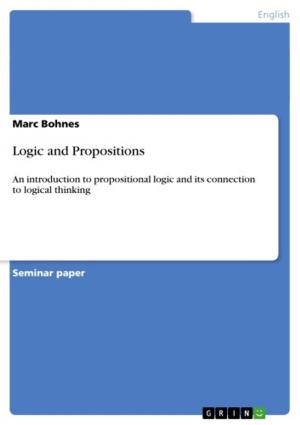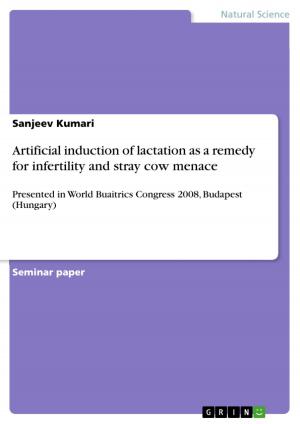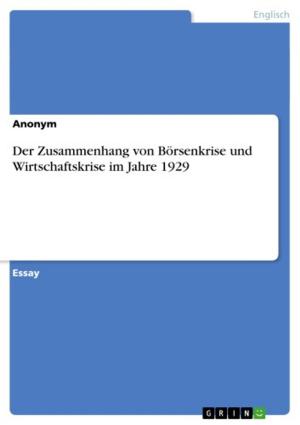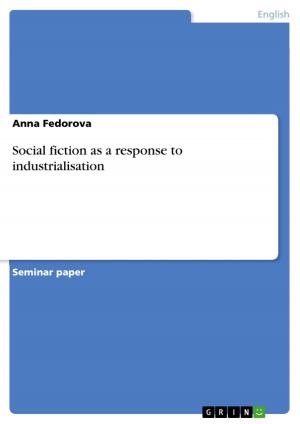The Modern Portrait in Eliot's 'Portrait of a Lady'
Fiction & Literature, Literary Theory & Criticism, British| Author: | Valentina Kluge | ISBN: | 9783640892839 |
| Publisher: | GRIN Publishing | Publication: | April 14, 2011 |
| Imprint: | GRIN Publishing | Language: | English |
| Author: | Valentina Kluge |
| ISBN: | 9783640892839 |
| Publisher: | GRIN Publishing |
| Publication: | April 14, 2011 |
| Imprint: | GRIN Publishing |
| Language: | English |
Seminar paper from the year 2009 in the subject English Language and Literature Studies - Literature, grade: 2,0, University of Kassel, language: English, abstract: In summary, in this paper the poem 'Portrait of a Lady' written by T. S. Eliot has been placed in a beginning of the 20th century genre of portraiture in painting and regarded as a modern portrait. There is a remarkable similarity of techniques implied in Eliot's poem and used by modern portrait artists such as different media of expression, technique of deconstruc-tion, incomprehensible image and flatness. The poem represents a dual portrait of an elderly lady and her friend, the young narrator. Both figures are characterised by their dramatic monologues from different perspectives. A great deal of the impressive effect of the poem is achieved through dramatic verse that exactly express the tones of the lady's speech. The free verse and effects of rhythm help to provide this impression. The technique of disembodiment and fragmentation used by Eliot shows certain similarities to cubist portrait artists who broke the portrayed subject up and re-assembled it in a new form. Furthermore, 'Portrait of a Lady' provides a shifting succession of thoughts, consciousness, protean in its variety of music and tone and depicts the figures' internal drama without creating a comprehensible image of their appearance. In addition, the lady imitates in her speech Arnold and expresses her feelings through quotations and, therefore, is mentally absent, though she eliminates the narrator's consciousness of himself as facing her. However, the observer registers the look of absorption which dominates the imaginary face of the lady. This effect of flatness is directly connected with modern portrait painters such as Édouard Manet. Therefore, it can be concluded that Eliot's 'Portrait of a Lady' is a notable example of the modern portrait in poetry.
Seminar paper from the year 2009 in the subject English Language and Literature Studies - Literature, grade: 2,0, University of Kassel, language: English, abstract: In summary, in this paper the poem 'Portrait of a Lady' written by T. S. Eliot has been placed in a beginning of the 20th century genre of portraiture in painting and regarded as a modern portrait. There is a remarkable similarity of techniques implied in Eliot's poem and used by modern portrait artists such as different media of expression, technique of deconstruc-tion, incomprehensible image and flatness. The poem represents a dual portrait of an elderly lady and her friend, the young narrator. Both figures are characterised by their dramatic monologues from different perspectives. A great deal of the impressive effect of the poem is achieved through dramatic verse that exactly express the tones of the lady's speech. The free verse and effects of rhythm help to provide this impression. The technique of disembodiment and fragmentation used by Eliot shows certain similarities to cubist portrait artists who broke the portrayed subject up and re-assembled it in a new form. Furthermore, 'Portrait of a Lady' provides a shifting succession of thoughts, consciousness, protean in its variety of music and tone and depicts the figures' internal drama without creating a comprehensible image of their appearance. In addition, the lady imitates in her speech Arnold and expresses her feelings through quotations and, therefore, is mentally absent, though she eliminates the narrator's consciousness of himself as facing her. However, the observer registers the look of absorption which dominates the imaginary face of the lady. This effect of flatness is directly connected with modern portrait painters such as Édouard Manet. Therefore, it can be concluded that Eliot's 'Portrait of a Lady' is a notable example of the modern portrait in poetry.















